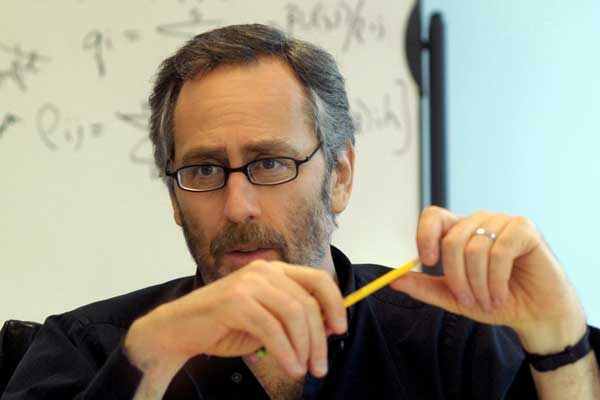David E. Shaw’s special-purpose supercomputer could help researchers understand malfunctions underlying many diseases.
CHAPEL HILL, NC–Understanding how protein molecules move could resolve longstanding scientific questions and help researchers design a new generation of lifesaving drugs.
But molecular simulations of proteins are so computationally intensive that even the most powerful general-purpose supercomputers can capture their behavior for periods of no more than a few microseconds.
David E. Shaw, chief scientist at D. E. Shaw Research and a senior research fellow at the Center for Computational Biology and Bioinformatics at Columbia University, set out to overcome this barrier. The result is Anton, a special-purpose supercomputer that can simulate protein behavior over periods more than 100 times longer than was previously possible. The machine has enabled major advances in the understanding of several biological phenomena, including the process by which proteins “fold” into the three-dimensional shapes that underlie their function.
Shaw will talk about Anton and its scientific and biomedical potential at a Feb. 27 lecture sponsored by the Triangle Computer Science Distinguished Lecture Series and RENCI, the Renaissance Computing Institute. Shaw’s talk begins at 4 p.m. in 011 Sitterson Hall on the UNC campus. A reception will precede the lecture at 3:45 p.m.
Proteins are long chains of amino acids that play a central role in the activities of all living organisms. Understanding how a protein folds into its characteristic three-dimensional structure has long been considered one of the “grand challenge problems” in the field of molecular biology. A number of diseases, including Alzheimer’s, Parkinson’s, cystic fibrosis, and ALS, are associated with the incorrect folding of proteins. Understanding the process of protein folding at an atomic level of detail has the potential to shed light on the origins, and perhaps ultimately the treatment, of such diseases.
The timescale on which most proteins fold, however, has previously fallen far outside the reach of biomolecular simulation. By vastly accelerating the process of “molecular dynamics” simulation, Anton has allowed scientists at D. E. Shaw Research to observe for the first time the repeated folding and unfolding of proteins, and to answer key questions. These advances led the journal Science to name the machine, and the research it enables, as one of the 10 most important scientific breakthroughs of 2010.
Dr. Shaw received his Ph.D. from Stanford University in 1980, served on the faculty of the computer science department at Columbia University until 1986, and founded the D. E. Shaw group in 1988. Since 2001, he has devoted his time to hands-on computational biochemistry research at D. E. Shaw Research. Shaw was appointed to the President’s Council of Advisors on Science and Technology by President Clinton in 1994, and again by President Obama in 2009. He was elected to the National Academy of Engineering in 2012, and is a fellow of the American Academy of Arts and Sciences and a winner of the Gordon Bell Prize.



